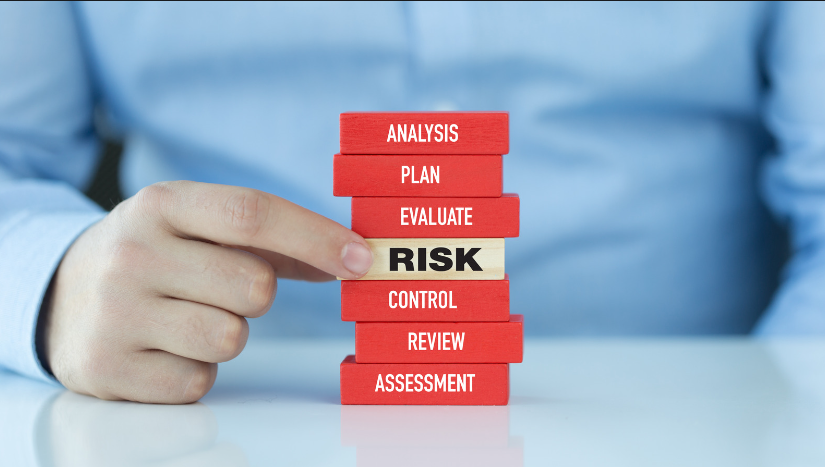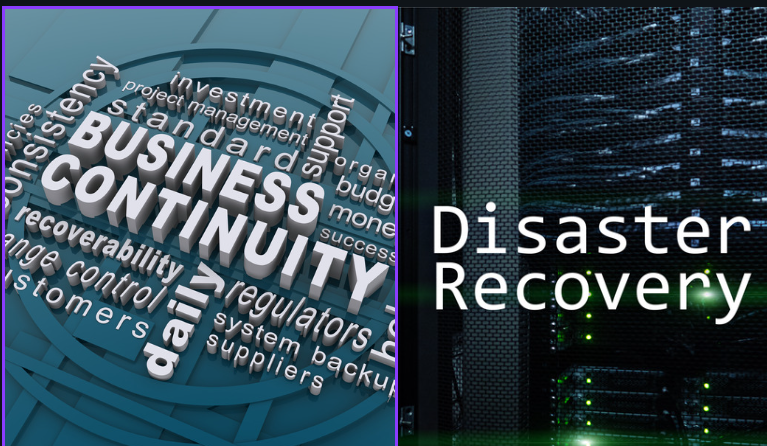Risk management is a critical process in any organization, involving the identification, assessment, and mitigation of various threats that could impact operations. Despite implementing effective controls, some level of risk always remains. This is known as residual risk—the risk that persists after all mitigation efforts. Properly managing risk helps organizations ensure that they are adequately protected and compliant with regulations.
This blog will walk you through the risk phase and provide practical steps to navigate and manage residual risks effectively.
1. Understanding Residual Risk
What is Residual Risk?
Residual risk is the risk that remains after an organization has implemented all reasonable risk controls and mitigation strategies. It’s the portion of risk that cannot be entirely eliminated and needs to be managed or accepted as part of the organization’s operational risk.
Key Concepts:
- Inherent Risk: The level of risk before any control measures are applied.
- Residual Risk: The level of risk that remains after control measures have been applied.
| Type | Definition |
| Inherent Risk | The initial risk before any mitigation measures are in place. |
| Residual Risk | The remaining risk after all controls have been applied. |
2. Steps to Manage Residual Risk
Step 1: Conduct Risk Assessment
A thorough risk assessment helps identify inherent risks and prioritize them based on their potential impact.
- Identify inherent risks: Identify risks in processes, technology, systems, and external factors.
- Analyze risk scenarios: Evaluate the likelihood and potential impact of each risk event.
Step 2: Implement Controls
Once the risks are identified, organizations should implement various control measures, such as:
- Technical Controls: Installing firewalls, encryption, or intrusion detection systems.
- Administrative Controls: Establishing policies, guidelines, and procedures to reduce risk exposure.
Step 3: Evaluate Control Effectiveness
Organizations should periodically review their control measures to ensure they are functioning as intended. This can be done by:
- Performing Control Testing: Conduct regular tests and audits to verify control efficiency.
- Reviewing Control Performance: Analyze data to assess any gaps in control effectiveness.
Step 4: Calculate Residual Risk
Residual risk can be calculated by subtracting the risk mitigation efforts from the inherent risk.
Residual Risk Formula:
Residual Risk = Inherent Risk – Risk Controls
| Risk Type | Inherent Risk | Control Impact | Residual Risk |
| Cybersecurity Breach | High | Moderate | Low |
| Financial Instability | Medium | High | Low |
Step 5: Compare Residual Risk to Tolerance Levels
Once the risk is determined, compare it to your organization’s predefined risk tolerance. If the risk falls within acceptable limits, no further action is required. If it exceeds the threshold, additional mitigation strategies may be necessary.
- Define Risk Tolerance: Set thresholds for acceptable levels of risk based on the organization’s risk appetite.
- Evaluate Acceptability: Determine if additional mitigation is needed based on the risk vs. tolerance comparison.
Step 6: Manage and Mitigate Residual Risk
Strategies to manage risk:
- Risk Avoidance: Eliminate activities that introduce excessive risk.
- Risk Reduction: Enhance controls or implement new controls to further mitigate risks.
- Risk Transfer: Outsource risk management tasks or obtain insurance.
- Risk Acceptance: Accept risks that fall within tolerable levels, after performing a cost-benefit analysis.
- Continuous Monitoring: Regularly review the risk environment and adjust controls as necessary.
3. Frameworks for Managing Residual Risk
Using established frameworks helps streamline risk management by providing structured approaches to consistently identify, assess, and mitigate risks. These frameworks offer best practices, guidelines, and methodologies to manage risk—those risks that remain even after applying control measures. By adopting recognized frameworks, organizations can ensure that risk management processes are standardized, efficient, and compliant with industry regulations. Below are some widely recognized frameworks and standards for managing residual risk.
1. ISO 31000: Risk Management Guidelines
ISO 31000 is an internationally recognized standard that provides guidelines for managing various types of risks, including risks. It offers a systematic approach to risk management that can be applied to any organization, regardless of size or industry. ISO 31000 focuses on creating a risk-aware culture within organizations by emphasizing risk identification, evaluation, and continuous monitoring.
The standard outlines a process that includes:
- Risk Identification: Understanding what risks could affect the organization.
- Risk Assessment: Evaluating the likelihood and impact of identified risks.
- Risk Treatment: Implementing controls to mitigate those risks.
- Risk Monitoring and Review: Regularly reviewing risk controls and adapting them as necessary.
ISO 31000 is flexible, allowing organizations to tailor its principles to their specific risk management needs, which makes it a highly adaptable framework for managing residual risk.
2. ISO 27001: Information Security Management System
ISO 27001 is another globally accepted standard, primarily focusing on managing information security risks, including risks associated with cybersecurity. It emphasizes the importance of implementing an Information Security Management System (ISMS) to protect sensitive data and mitigate risks. ISO 27001 requires organizations to assess security risks and implement appropriate controls, while also demanding continuous improvement and monitoring.
The core components of ISO 27001 include:
- Risk Assessment: Identifying risks to information security.
- Control Selection and Implementation: Applying controls to mitigate risks based on their severity.
- Monitoring and Auditing: Ensuring that the controls remain effective over time.
This standard is particularly useful for organizations looking to manage residual risks associated with cyber threats and data breaches.
3. NIST Cybersecurity Framework (CSF)
The NIST Cybersecurity Framework (CSF) is designed to help organizations manage and reduce cybersecurity risks. While originally developed for critical infrastructure, the framework is now widely used across industries. NIST CSF provides a comprehensive approach to identifying, protecting, detecting, responding to, and recovering from cybersecurity threats.
Key components include:
- Identify: Recognizing risks to systems and assets.
- Protect: Implementing controls to safeguard against cybersecurity events.
- Detect: Monitoring for cybersecurity incidents.
- Respond and Recover: Handling and mitigating incidents, and restoring normal operations.
The framework’s flexibility allows it to be customized to fit the risk management needs of various industries, making it highly effective in addressing residual cybersecurity risks.
4. COSO ERM Framework
The COSO Enterprise Risk Management (ERM) Framework helps organizations manage risks across the enterprise. It integrates risk management with strategic planning and decision-making, enabling organizations to align their risk management efforts with business objectives. COSO ERM emphasizes the importance of identifying and mitigating risks that could affect long-term goals.
The COSO ERM framework includes:
- Risk Governance and Culture: Establishing oversight and accountability for risk management.
- Risk, Strategy, and Objective-Setting: Ensuring risk management is part of the strategic planning process.
- Risk Monitoring and Reporting: Continuously tracking risk metrics and reporting to stakeholders.
| Framework | Description |
| ISO 31000 | Provides guidelines for implementing risk management practices. |
| ISO 27001 | Focuses on managing information security risks, including residual risk. |
| NIST Cybersecurity Framework (CSF) | Designed to manage cybersecurity risks for critical infrastructures. |
| COSO ERM Framework | Enterprise-wide approach to risk management that includes strategic and operational risks. |
| FAIR Framework | Quantifies risks in financial terms to assess and manage information risks. |
ISO 31000 Example
ISO 31000 outlines a risk management process that consists of:
- Risk Identification: Understanding which risks are present.
- Risk Assessment: Determining the likelihood and impact of each risk.
- Risk Treatment: Applying controls and mitigation strategies.
- Risk Monitoring: Continuously reviewing the risk landscape.
Conclusion
Managing residual risk is an ongoing process that requires constant monitoring and evaluation. By identifying, assessing, and mitigating residual risk, organizations can improve their security posture and achieve regulatory compliance. Implementing comprehensive frameworks such as ISO 31000 or COSO ERM can help ensure that the organization remains proactive in managing residual risk.
To effectively manage residual risk, consider the following key takeaways:
- Regularly assess and document risk levels.
- Compare risk to your organization’s risk tolerance.
- Take action by implementing further controls or accepting risks that fall within tolerance levels.
- Use a structured framework to guide your risk management efforts.
- Continuously monitor and adapt to changing risk landscapes.
Effective residual risk management ensures that your organization is not only protected but also prepared to tackle future risks head-on. By maintaining a proactive approach, you can build resilience and navigate the complexities of risk management with confidence.
FAQs
1. What is the difference between residual risk and inherent risk?
Residual risk is the level of risk that remains after implementing risk controls, while inherent risk refers to the initial risk present before any mitigation measures are applied.
2. How can residual risk be managed effectively?
Residual risk can be managed by enhancing control measures, accepting risk within tolerance levels, or transferring risk through insurance or outsourcing.
3. Why is it important to calculate residual risk?
Calculating risk helps organizations understand the remaining risks after controls are applied, allowing them to decide if additional actions are necessary or if the risk can be accepted.
4. What frameworks are used to manage risk?
Frameworks like ISO 31000, ISO 27001, NIST CSF, and COSO ERM provide structured approaches for managing residual risk effectively.
5. How do you know if risk is acceptable?
Residual risk is considered acceptable if it falls within the organization’s defined risk tolerance levels, as determined by a cost-benefit analysis and risk assessment process.
Click here, to know more about India’s Critical Infrastructure Suffers Spike in Cyberattacks.









